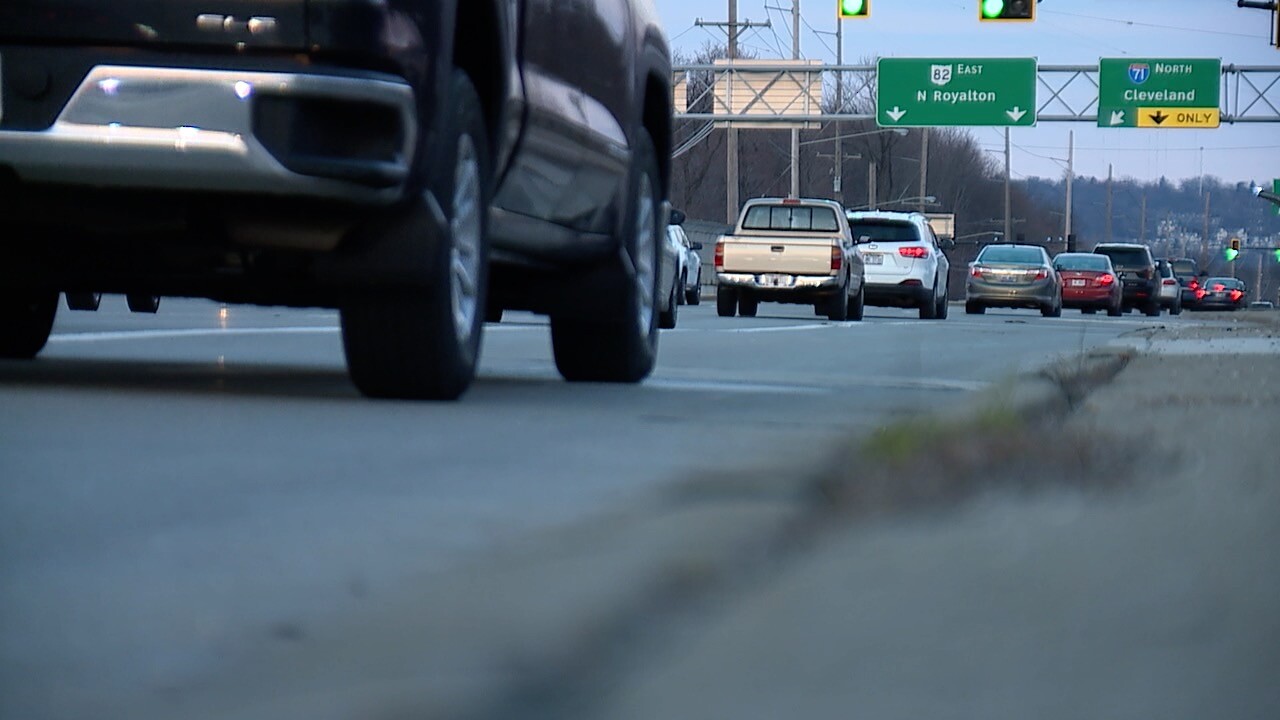BRUNSWICK, Ohio — Among the provisions in the state’s largest ever transportation budget is a project that has stirred controversy in Northeast Ohio for several decades. Before he signed the $13.5 billion transportation bill into law Friday, Governor Mike DeWine addressed a proposed interchange on Interstate 71 between Strongsville and Brunswick.
“There clearly is a traffic problem, a highway safety problem, that needs to be dealt with,” DeWine said. “Obviously, there’s a lot of contention about how to deal with the problem.”
State Representative Tom Patton (R-Strongsville), who is the chair of the House Finance Subcommittee on Transportation, added language to the bill requiring ODOT to ensure there is limited access on and off ramps every 4.5 miles on the interstate between cities with more than 35,000 people, when at least one of the cities is in a county with more than 1 million people.
“Containing language like this in a bill is not the conventional way that interchanges occur in the state of Ohio or anything else in regard to transportation. We have a procedure to be followed. This did not follow that procedure,” DeWine said.
The language describes a more than 5-mile stretch of I-71 from Route 82 in Strongsville to Route 303 in Brunswick.
“I-71 was built in the late 50s when Strongsville and Brunswick had just a few thousand people apiece. It was all farmland back then,” Patton told News 5 Thursday, explaining the population of Strongsville is now near 50,000 and Brunswick is above 35,000.
The growth of both cities has led to more traffic congestion and crashes.

“The intersection of Route 82 and Howe Road is in most years the highest or no better than the second highest accident area in the region,” Patton said. “There’s times when the 82 exit ramp will back up all the way to the Turnpike ramp, which is almost a full mile.”
Patton and others in Strongsville have long been proponents of an additional interchange between the two cities, saying it would alleviate traffic and promote. Some neighbors to the south in Brunswick disagree.
“We’ll be going from a livable, beautiful city to just a rest stop,” said Brunswick City Council President Nicholas Hanek.
Though the language in the transportation bill does not specify where the highway ramps could go, many say Boston Road, which is the dividing line between the two suburbs, would be the logical choice.
Hanek strongly opposes the idea. He’s been raising concerns about the residential street turning into a major commercial corridor like Route 82. It’s a design he believes is the root of Strongsville’s traffic woes.
“They built up 82, up near where the mall is, with all these big box stores and parking lots and big lanes. They don’t control their traffic at all,” he explained. “They’re just going to create the same dumb planning they did to get us into this in another place.”
Adding on and off ramps at Boston Road would likely require the acquisition of homes, redesign of neighborhoods and widening of the road itself.

The project’s impact has been a topic of discussion on both sides of the road for years.
“We’ve heard grumblings off and on since we moved in,” said Nicole Court, who lives on the Strongsville side of Boston Road “I would prefer, if they’re going to do it, that they would offer to buy our house, versus us staying right by a busy ramp.”
Her husband Josh Court added, “It’s quiet. I mean that’s what drew me to this area. We had to cut down some trees, but it’s just secluded back here.”
Hanek believes remaining homes would lose value if ramps were built nearby. He also said he worries about the cities being responsible for the costs of widening the road, which sits near an underground fuel pipeline.
“What it says is ‘Oh, we’re doing a highway interchange.’ It doesn’t say ‘in a residential neighborhood with a jet fuel line.’ It doesn’t say what the effects are if it actually happens here,” he said.
On Friday, DeWine said any potential project faces many hurdles, including federal, state and local approval. He also said ODOT is still wrapping up a traffic study in the area and doesn’t anticipate starting a project there until 2030 at the earliest.
“I decided to sign it and leave that pressure on, but with the understanding that this is not going to take place for a long, long time,” he said. “There are many hurdles that it has to go over and getting a solution that’s agreed upon, even if it’s not what makes everybody totally happy.”
Hanek said Brunswick City Council will hold a special meeting at 6 p.m. on Monday to discuss the city’s options and next steps.
The Transportation Budget goes into effect on July 1, 2023.
Watch live and local news any time:
Download the News 5 Cleveland app now for more stories from us, plus alerts on major news, the latest weather forecast, traffic information and much more. Download now on your Apple device here, and your Android device here.
You can also catch News 5 Cleveland on Roku, Apple TV, Amazon Fire TV, YouTube TV, DIRECTV NOW, Hulu Live and more. We're also on Amazon Alexa devices. Learn more about our streaming options here.




